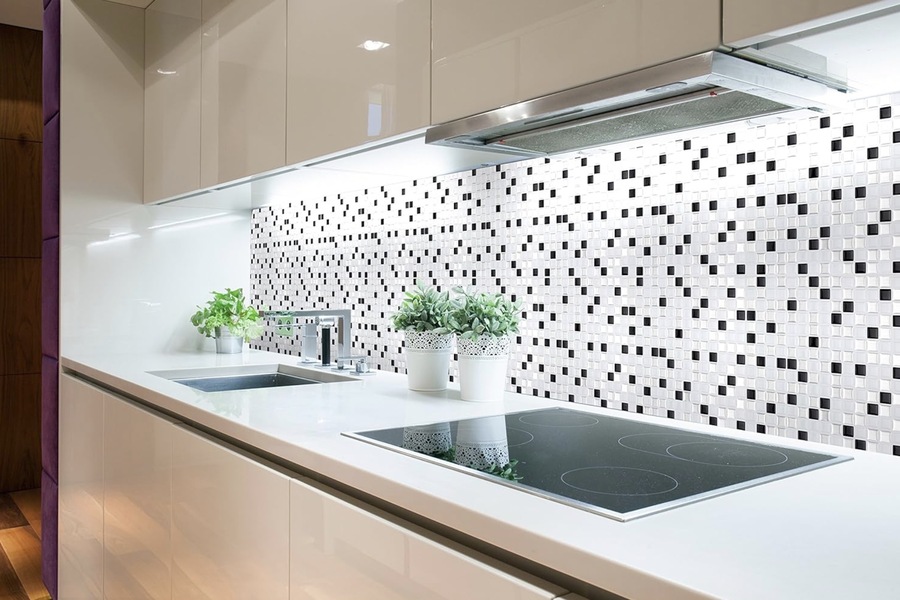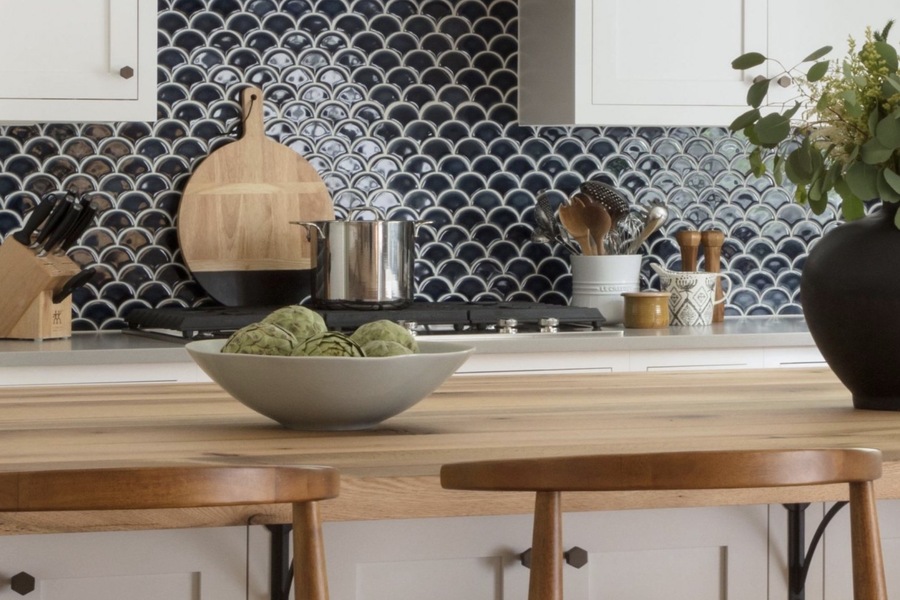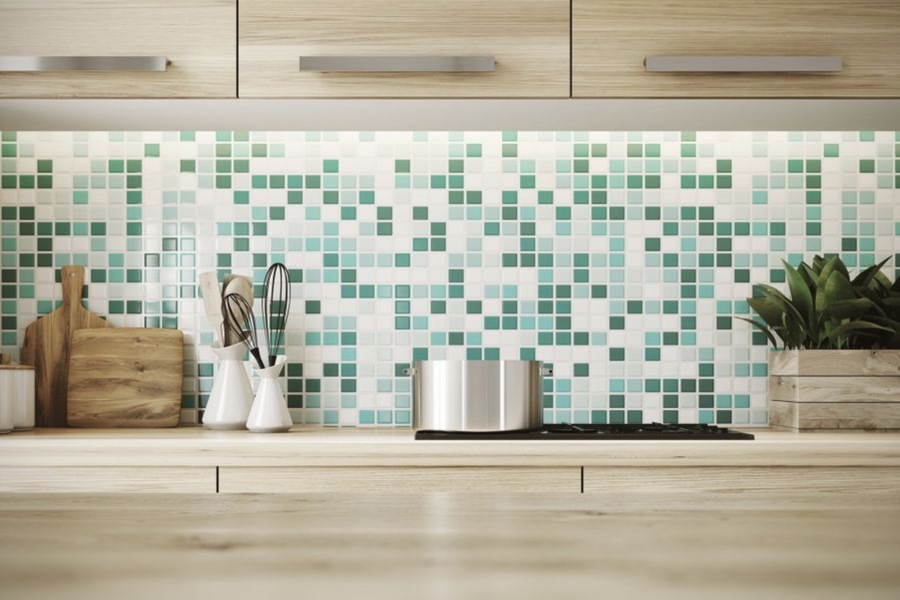The art of mosaic has been practiced for thousands of years, transforming small pieces of material into intricate patterns and designs. In contemporary settings, this art form finds new life through the creative use of leftover kitchen wall tiles. This article explores various innovative applications for these remnants, providing practical and aesthetic solutions for repurposing excess tiles. By considering these ideas, homeowners and designers can minimize waste, enhance interior spaces, and create unique, personalized decor.
Understanding Mosaic Art
Mosaic art involves assembling small pieces of materials, known as tesserae, to create a larger image or pattern. Traditionally, mosaics have been made from stone, glass, and ceramic, but modern iterations often include a variety of materials. The flexibility of mosaic design allows for endless creativity, making it an ideal way to use leftover kitchen wall tiles.
Benefits of Using Leftover Tiles
Repurposing leftover kitchen wall tiles offers several benefits:
- Cost-Effectiveness: Utilizing materials already on hand saves money that would otherwise be spent on new decor or renovation materials.
- Environmental Impact: Reducing waste by repurposing tiles contributes to environmental sustainability.
- Customization: Mosaics created from leftover tiles can be customized to suit personal tastes and match existing decor.

Creative Uses for Leftover Kitchen Wall Tiles
1. Mosaic Backsplashes
One of the most popular applications for leftover kitchen wall tiles is creating a mosaic backsplash. A mosaic backsplash adds visual interest and texture to a kitchen, serving as a focal point that enhances the overall design. By using various colors, shapes, and sizes of leftover tiles, homeowners can create unique patterns that reflect their style.
2. Accent Walls
Transforming an entire wall into a mosaic can create a striking accent in any room. Whether in the kitchen, bathroom, or living area, an accent wall composed of leftover tiles can add depth and character. This application works particularly well in smaller spaces, where a single mosaic wall can make a significant impact without overwhelming the room.
3. Tabletops and Countertops
Leftover kitchen wall tiles can be used to create custom tabletops or countertops. This approach allows for the design of durable, easy-to-clean surfaces that are both functional and decorative. Mosaic tabletops can be made for dining tables, coffee tables, or outdoor furniture, adding a personalized touch to everyday items.
4. Garden Paths and Stepping Stones
In outdoor settings, leftover tiles can be used to craft garden paths and stepping stones. Arranging tiles in intricate patterns along a garden path can create a whimsical and inviting atmosphere. Stepping stones made from tiles provide practical benefits while contributing to the garden’s aesthetic appeal.
5. Picture Frames and Mirrors
Small amounts of leftover tiles can be used to decorate picture frames and mirrors. Adorning the edges of a frame with a mosaic pattern can transform a plain mirror or photo frame into a decorative piece. This application is particularly effective with brightly colored or textured tiles that draw attention to the frame’s details.
6. Planters and Flower Pots
Decorating planters and flower pots with leftover tiles can add color and interest to garden spaces. Creating mosaic patterns on these containers can elevate the look of potted plants, making them attractive focal points in a garden or indoor setting. This application allows for creative expression and adds a unique touch to plant displays.
7. Coasters and Trivets
Crafting coasters and trivets from leftover kitchen wall tiles provides a functional use for smaller pieces. These items protect surfaces from heat and moisture while adding a decorative element to the dining table. Mosaic coasters and trivets can be customized with various patterns and designs, making them excellent gifts or personal decor items.
8. Decorative Art Panels
Creating decorative art panels is another way to use leftover tiles. These panels can be hung on walls as standalone art pieces or incorporated into larger installations. Art panels offer an opportunity to experiment with different patterns and colors, resulting in unique works of art that showcase personal style.
Techniques for Creating Mosaic Art
When working with leftover tiles, several techniques can enhance the final product:
- Cutting and Shaping Tiles: Using tile nippers or a wet saw to cut tiles into smaller pieces allows for greater flexibility in design.
- Adhesives and Grout: Selecting the right adhesives and grout is crucial for the durability and appearance of the mosaic. Epoxy adhesives and grout can offer enhanced water resistance and strength.
- Surface Preparation: Ensuring the surface is clean, dry, and properly primed before applying tiles will improve adhesion and longevity.
- Design Planning: Sketching out a design beforehand can help visualize the final product and guide the placement of tiles.
Tips for Successful Mosaic Projects
- Start Small: Beginning with smaller projects, such as coasters or picture frames, allows for practice and skill development before tackling larger installations.
- Mix and Match: Combining tiles of different colors, textures, and sizes can create more dynamic and interesting patterns.
- Balance and Symmetry: While mosaics do not need to be symmetrical, maintaining a sense of balance can enhance the overall aesthetic.
- Experiment with Grout Colors: Different grout colors can dramatically alter the appearance of the mosaic. Dark grout can make colors pop, while light grout can create a more unified look.

Historical Significance of Mosaics
Mosaics have a rich history, dating back to ancient civilizations. Early mosaics were found in Mesopotamia, Greece, and Rome, where they adorned floors, walls, and public spaces. These historical pieces often depicted scenes from mythology, daily life, and nature, showcasing the artistic skills of their creators. The enduring appeal of mosaics lies in their ability to tell stories and transform spaces through intricate designs.
Contemporary Applications
Today, mosaics are used in a variety of settings, from public art installations to private homes. Modern mosaics often incorporate a wider range of materials, including recycled glass, metal, and plastics. This evolution reflects changes in artistic trends and environmental considerations. The flexibility of mosaic art makes it a popular choice for both interior and exterior design projects.
Resources for Mosaic Enthusiasts
For those interested in exploring mosaic art further, several resources are available:
- Books and Online Tutorials: Numerous books and online tutorials provide step-by-step instructions and inspiration for mosaic projects.
- Workshops and Classes: Local art centers and community colleges often offer workshops and classes on mosaic techniques.
- Supply Stores: Specialized stores sell mosaic tools, adhesives, grout, and a variety of tesserae, catering to both beginners and experienced artists.
Conclusion
The art of mosaic offers a creative and practical way to use leftover kitchen wall tiles. From backsplashes and accent walls to coasters and planters, the possibilities are vast. By understanding the techniques and principles of mosaic art, homeowners and designers can transform surplus tiles into unique, functional, and decorative pieces. Embracing this ancient art form not only adds beauty to spaces but also promotes sustainability by minimizing waste.
For more information on sustainable building practices and materials, visit the U.S. Green Building Council website.

Baseball fan, maker, hiphop head, vintage furniture lover and collaborator. Acting at the fulcrum of aesthetics and function to create great work for living breathing human beings. Check me out on Dribbble or Medium.



